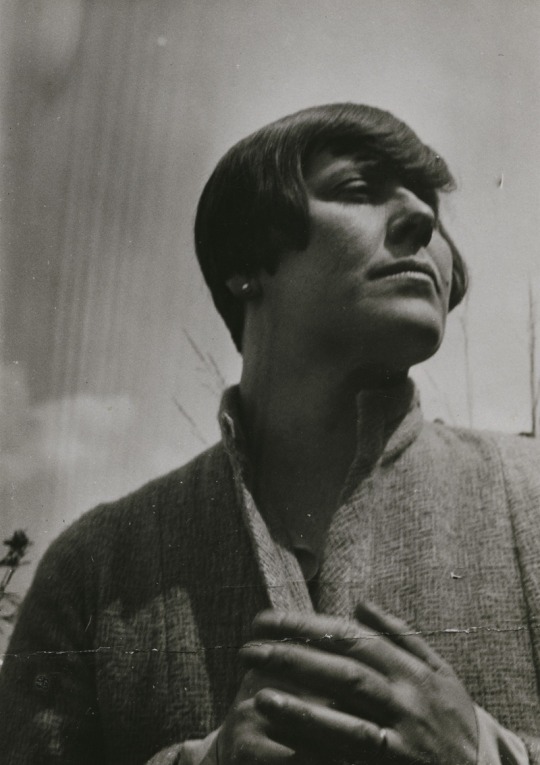#Hilla von Rebay
Text
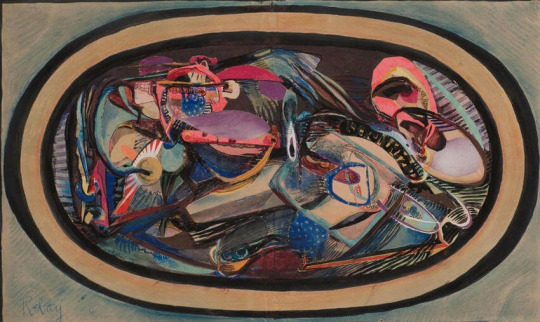


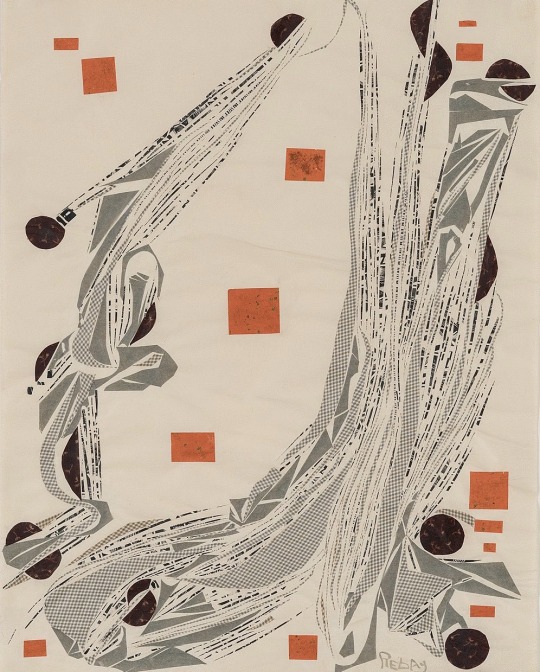
Hilla von Rebay
“Painting, like music, has nothing to do with the reproduction of nature, nor interpretation of intellectual meanings. Whoever is able to feel the beauty of colors and forms has understood nonobjective painting.”
0 notes
Text
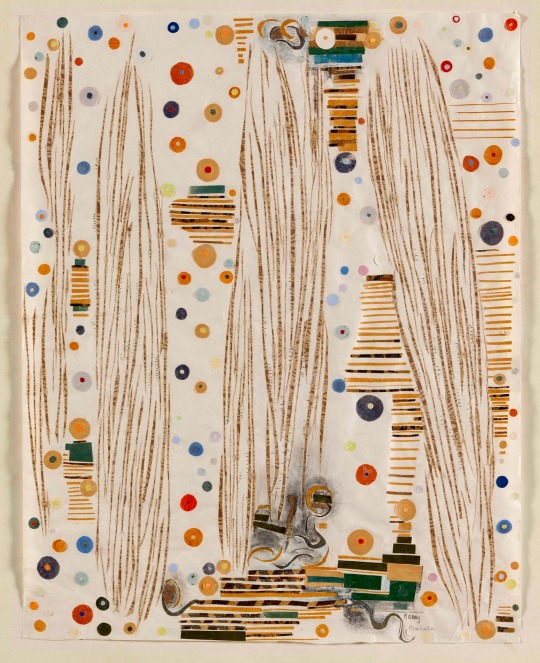
HILLA REBAY VON EHRENWIESEN
Piccicato, 1920.
Collage
Ketterer and Kunst
48 notes
·
View notes
Photo


László Moholy-Nagy, Space III, (oil and incised lines on plexiglas), 1940 [The Hilla von Rebay Foundation, on extended loan to the Solomon R. Guggenheim Museum, New York, NY]
#art#drawing#geometry#pattern#structure#laszlo moholy nagy#the moholy nagy foundation#solomon r. guggenheim museum#solomon r. guggenheim foundation#1940s
48 notes
·
View notes
Text
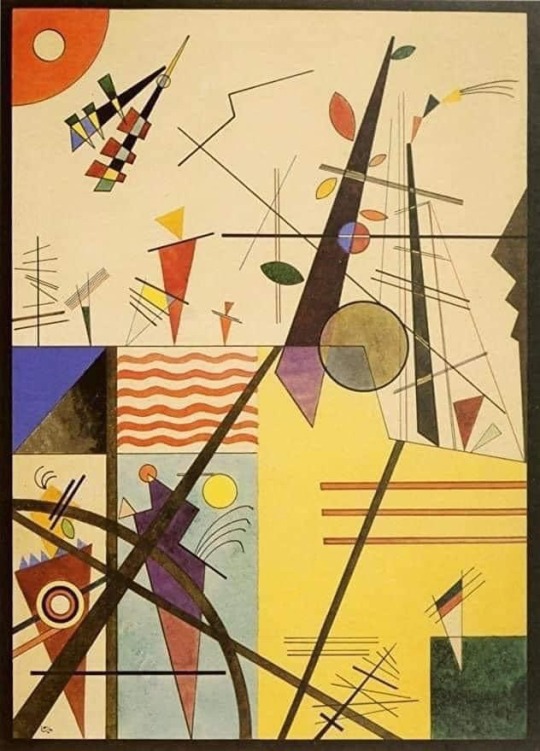
Wassily Kandinsky
Helle Klarheit, 1924
Watercolour, Gouache, Pen and Ink on Paper The Hilla von Rebay Foundation
0 notes
Photo

@lego @legokinrell @lego_buildergs @life_is_lego @lego.iste @legoarchitecturemoc #lego The Solomon R. Guggenheim Museum, often referred to as The Guggenheim, is an art museum at 1071 Fifth Avenue between 88th and 89th Streets on the Upper East Side of Manhattan in New York City. It is the permanent home of a continuously expanding collection of Impressionist, Post-Impressionist, early Modern, and contemporary art and also features special exhibitions throughout the year. The museum was established by the Solomon R. Guggenheim Foundation in 1939 as the Museum of Non-Objective Painting, under the guidance of its first director, Hilla von Rebay. The museum adopted its current name in 1952, three years after the death of its founder Solomon R. Guggenheim. (at Guggenheim Museum) https://www.instagram.com/p/CpEHn_fv2ys/?igshid=NGJjMDIxMWI=
0 notes
Photo
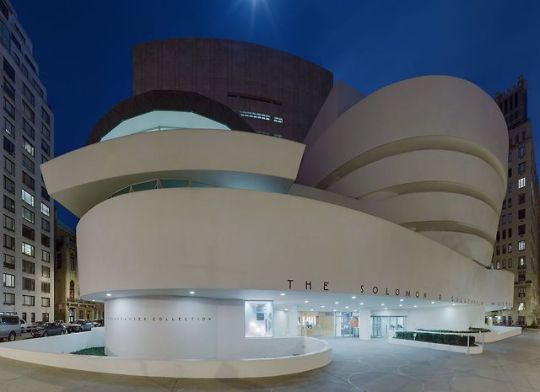

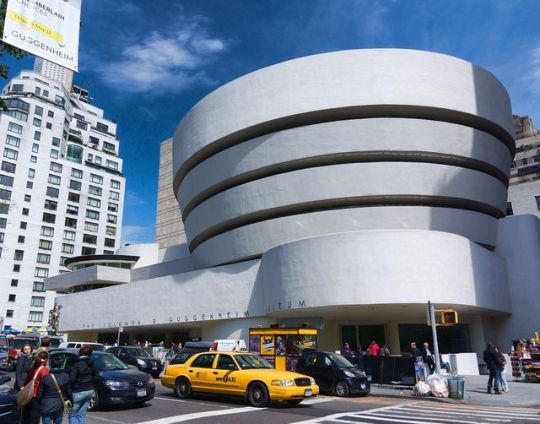
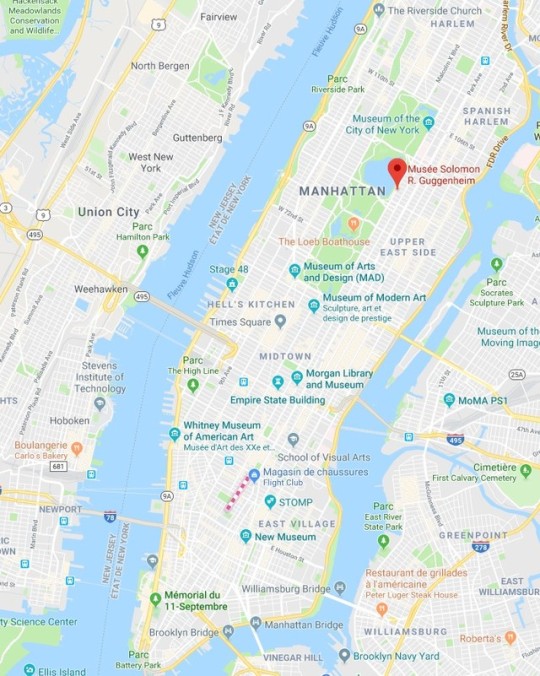
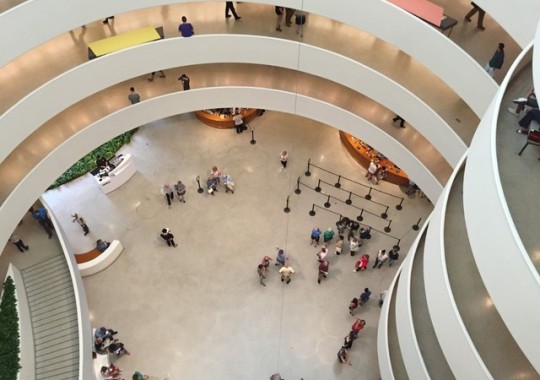
Solomon R. Guggenheim Museum - 1071 Fifth Avenue at 89th Street
The Solomon R. Guggenheim Museum (often referred to as "The Guggenheim") is a well-known art museum on the Upper East Side of Manhattan in New York City. It has a large collection of Impressionist, Post-Impressionist, early Modern and contemporary art. It also has several special exhibitions during each year.
“I can see a tall building of a new type perfectly appropriate to our purpose, having monumental dignity and great beauty.” In 1943, architect Frank Lloyd Wright wrote these words to Solomon R. Guggenheim, whose namesake museum Wright would go on to design. The building Wright envisioned, which opened in 1959, is now seen by many as his masterpiece.
└─► NYC Arts - Solomon R. Guggenheim Museum
#manhattan#midtown manhattan#midtownmanhattan#central park#centralpark#fifth avenue#the fifth avenue#1071 fifth avenue#guggenheim museum#guggenheim#the guggenheim museum#solomon r. guggenheim museum#frank lloyd wright#hilla von rebay#peter b. lewis
337 notes
·
View notes
Text
trentuno maggio


Ellsworth Kelly, Magnolia from Suite of Plant Lythographs, 1966
Siccità
Quando la siccità sopra la terra avrà disteso
la sua pelle d’asina e cementato l’argilla bianca
intorno alla sorgente, il sale rosa delle saline
annuncerà la rossa fine degli imperi, e la femmina
grigia del tafano, spettro dagli occhi di fosforo,
si lancerà come ninfomane sugli uomini svestiti
delle spiagge……
View On WordPress
#Alessandro Allori#Bernard Lewis#Clint Eastwood#Ellsworth Kelly#Hilla von Rebay#Ludwig Tieck#Magnus#Rainer Werner Fassbinder#Saint-John Perse#Svjatlana Aleksievič#Vittorio Strada#Walt Whitman
0 notes
Photo
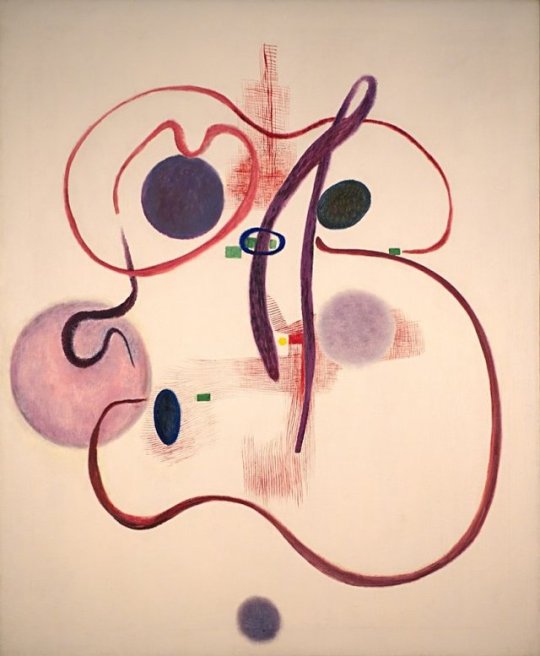
Delicate, 1950 - Hilla Rebay (1890–1967)
oil on canvas | source:
74 notes
·
View notes
Photo
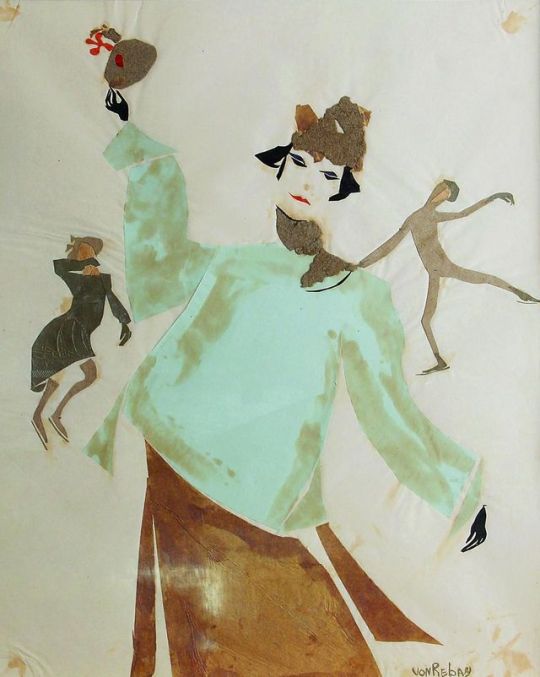
Hilla Rebay (1890-1967), Patinage. Cut paper collage, 14x17 in.
45 notes
·
View notes
Link
In 1946, Smith and Belson began attending the inaugural screenings of the Art in Cinema series at the San Francisco Museum of Art (the word “Modern” had not yet been added to the name). Originating as a touring program of experimental films circulated by the Museum of Modern Art in New York, the Art in Cinema series expanded under the direction of Frank Stauffacher and Richard Foster to include work by Maya Deren, James and John Whitney, Oskar Fischinger, Mary Ellen Bute, Hans Richter, and Viking Eggeling. Smith and Belson attended Art in Cinema programs religiously for the next four years, and Smith became Stauffacher’s unpaid assistant.3 Smith was especially attracted to the films of Fischinger and in the summer of 1947 traveled to Los Angeles to meet him. He would end up meeting John Cage, Merce Cunningham, and many figures of the Los Angeles avant-garde at Fischinger’s house. A network between the experimental filmmakers of San Francisco and Los Angeles was established. And it was Fischinger who made the important introduction to Smith and Belson’s future patron, the Baroness Hilla Rebay von Ehrenwiesen.
Rebay believed passionately in the cause of nonobjective painting. The three corresponded, and Rebay sent her translations of Kandinsky’s Concerning the Spiritual in Art (1911) and Point and Line to Plane (1926), both recently published by the Guggenheim Foundation and both formative texts for Smith and Belson. Rebay was particularly devoted to the work of Bauer, whom she’d rescued to the United States, literally buying his way out of a Gestapo prison. When Rebay visited the Bay Area in 1948, Belson and Smith picked her up in Belson’s Ford Model T and they drove to Belson’s studio in North Beach and then to Smith’s studio on Buchanan Street in the Fillmore district, where he kept a shabby room above a small jazz club called Jackson’s Nook. (Jimbo’s Bop City, the legendary bebop club where he later lived and painted murals, was two blocks away.) The visit resulted in stipends and small acts of generosity over the next few years—with the explicit understanding that the two men were to promote the agenda of nonobjective art. And although in time both Smith and Belson defected from Rebay’s camp, their fealty to nonobjectivism would never waver; it merely took other forms, including animated film and various protopsychedelic multimedia works leading directly to the light shows of the ’60s.
🌀
It is ironic that in many instances we know more about what took place in ancient Egypt than about what took place seventy-five years ago on Telegraph Avenue in Berkeley or Grant Avenue in San Francisco. The radical changes that Harry Smith and Jordan Belson instigated together are still being excavated—works that in many ways remain as radical as the day they were created.
2 notes
·
View notes
Photo

Die Aktion, vol. 7, no. 20/21, Hans Richter, Josef Capek, Wilhelm Schuler, Hilla Rebay von Ehrenwiesen, May 19, 1917, MoMA: Drawings and Prints
Committee on Prints and Illustrated Books Fund and The Library Council
Size: page (each approx.): 12 1/8 x 9 1/8" (30.8 x 23.2 cm)
Medium: Periodical with three woodcuts and one linoleum cut; cover by Hans Richter, additional prints by Josef Capek, Wilhelm Schuler, and Hilla Rebay von Ehrenwiesen
http://www.moma.org/collection/works/144413
1 note
·
View note
Photo
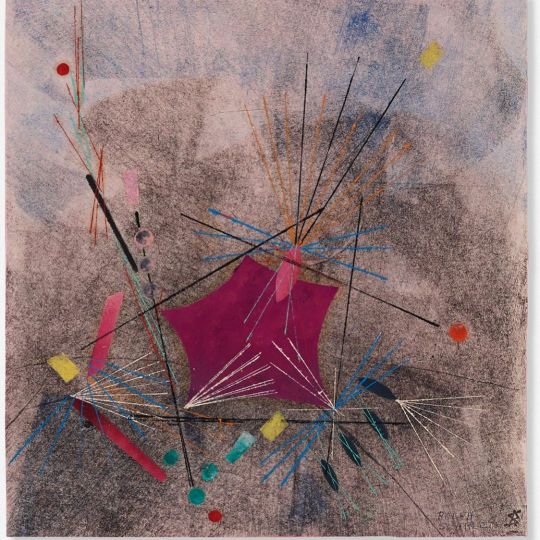
Hilla von Rebay, art advisor to Solomon Guggenheim and first Director of the Guggenheim Museum, called modernist master Rolph Scarlett her “greatest find.” Under her tutelage, Guggenheim would buy 60 works by Scarlett for his own collection (and later for that of the museum) and another 40 works for friends. When the Guggenheim opened, only Kandinsky had more works represented in the collection than did Scarlett. Lawrence Fine Art is honored to represent the work of Rolph Scarlett. #rolphscarlett @guggenheim #artoftheday #artoftomorrow #modernism #interiordesign #geometricabstraction #abstractart #artonpaper https://www.instagram.com/p/B-iHvEggn4M/?igshid=n3groovpn345
#rolphscarlett#artoftheday#artoftomorrow#modernism#interiordesign#geometricabstraction#abstractart#artonpaper
2 notes
·
View notes
Photo
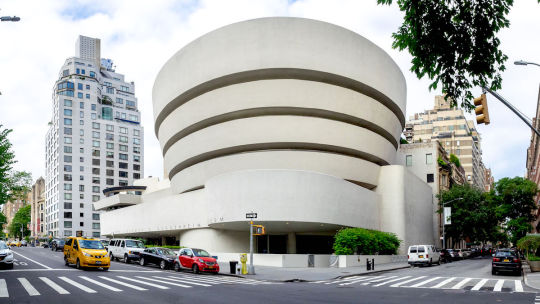
Frank Lloyd Wright's Masterpiece - The Guggenhein Museum New York The Solomon R. Guggenheim Museum, often referred to as The Guggenheim, is an art museum located at 1071 Fifth Avenue on the corner of East 89th Street in the Upper East Side neighborhood of Manhattan, New York City. It is the permanent home of a continuously expanding collection of Impressionist, Post-Impressionist, early Modern, and contemporary art and also features special exhibitions throughout the year. The museum was established by the Solomon R. Guggenheim Foundation in 1939 as the Museum of Non-Objective Painting, under the guidance of its first director, Hilla von Rebay. It adopted its current name after the death of its founder Solomon R. Guggenheim in 1952. In 1959, the museum moved from rented space to its current building, a landmark work of 20th-century architecture designed by Frank Lloyd Wright. The cylindrical building, wider at the top than at the bottom, was conceived as a "temple of the spirit". Its unique ramp gallery extends up from ground level in a long, continuous spiral along the outer edges of the building to end just under the ceiling skylight.
2 notes
·
View notes
Photo


Hilla von Rebay (1890-1967) co-founder and first director of the Guggenheim Museum in NY
1 note
·
View note
Photo

Birches by Vasily Kandinsky, 1907, Guggenheim Museum
Size: 10.8x15.7 cm
Medium: Woodcut
The Hilla von Rebay Foundation, On extended loan to the Solomon R. Guggenheim Museum, New York © 2014 Artists Rights Society (ARS), New York/ADAGP, Paris
https://www.guggenheim.org/artwork/1836
117 notes
·
View notes
